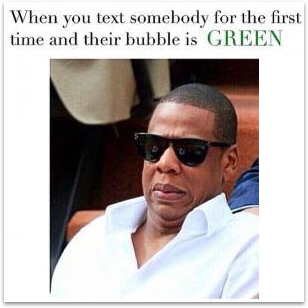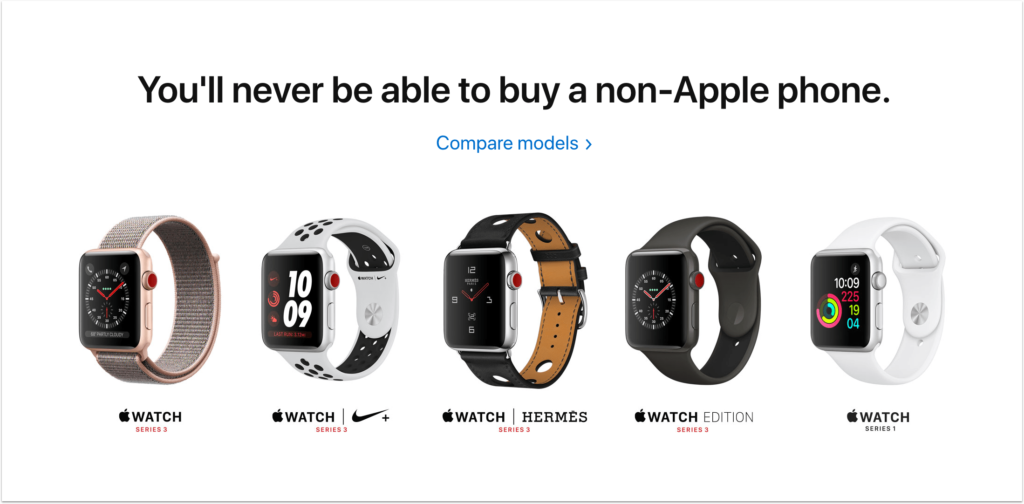Stickiness is a term usually used with a positive sentiment in the tech industry — everyone wants a sticky product.
However, the term lock-in is normally used negatively, describing products making it difficult for users to leave — even if they want to.
The two meanings are very similar. So what’s the line between good and evil when it comes to actively retaining customers?
How big-brand consumer products boost retention with stickiness
Achieving great retention doesn’t have to mean locking your users in a room with bars on the windows and throwing away the key.
The best products we use everyday are sticky in some form or another — they generate enough value or loyalty that users don’t want to leave. Be warned, however: the line between stickiness and lock-in is a fine one, as we’ll see later.
iMessage – Apple’s built-in proprietary messaging platform is incredibly sticky by design. Leaving the iOS ecosystem (i.e., getting a different brand of smartphone) means leaving behind your iMessage conversations, and either adopting a different messaging platform altogether or sending old-school SMS (shudder).

Spotify – Where unsubscribing means leaving behind all of those intricately curated mixtapes, subscribed playlists and personalized recommendations in your account.
Nespresso – Where owning their coffee machine means that I can only ever use the coffee pods manufactured by Nespresso (at 3x the cost of loose ground coffee).
Airline loyalty programs – “I need to keep flying with [airline] otherwise I’ll lose my platinum status!”
What’s interesting is that all of the above products have loyal, happy customers. These companies have generally succeeded in striking a balance between value to the customer and product lock-in.
- Nespresso machines taste great for the majority of non-coffee nerds.
- Spotify inspires me every week with new music recommendations.
- My airline loyalty program allows me to fly around the world with perks I wouldn’t normally have access to.
To the vast majority of customers, the value outweighs the potential pain of switching away. And the pain of switching away is enough to deter us in those dark times when we do consider it.
The more I invest in Apple’s platform, the greater the value for me as a user (my data syncs everywhere, things connect automatically, etc.) but the harder it is for me to leave altogether. This can undoubtedly be viewed as a negative lock-in effect. But the value means that my Apple-branded prison cell is actually rather comfortable, has super fast WiFi and beautiful anodized aluminum walls.

How can I make my B2B SaaS sticky?
On the surface, stickiness and product lock-in seem a bit more straightforward in SaaS. Discussion points like data portability and available integrations are a known quantity (you either can export your data or you can’t). However, a growing number of SaaS businesses are leveraging techniques from the consumer world to keep customers subscribed.
Encourage users to generate value inside your product
(Consumer example: Spotify and all those carefully-curated playlists I created)
This form of stickiness is common on large platforms, where the user generates, stores and works with their own data. It could be in the form of custom reports, complex workflows automation or generation of data. If that “thing” the customer generates is proprietary to your product, leaving means throwing away what may be hours of invested time and resources.
Just like those carefully curated Spotify playlists we can’t let go of, the more times users invest in value creation inside your product, the stronger the stickiness.
Build outstanding brand loyalty
(Consumer example: Any company you had an incredible experience with!)
What if the customer has simply built up such a rapport with your support team, your content, your brand, that their loyalty to your product stops them from leaving? Loyalty is a bigger factor than most of us expect (it’s built into us on a genetic level) and businesses can leverage this, with a well-executed engagement strategy.
In B2B SaaS we’re starting to see businesses with a laser-sharp focus on brand. Companies like Drift are learning lessons from the consumer world and putting brand strategy at the center of their growth efforts.
Peek Inside Drift’s Killer Brand Strategy: How to build a B2B SaaS brand that will stand the test of time is an excellent read on this topic.
Enforce user habit
(Consumer examples: Instagram, basically any modern social network)
As your customer, I’ve spent the past nine months of my life routinely running a report and checking key metrics in your platform with my morning coffee. The notification I receive in my inbox when the report is ready gives me a pleasant feeling, and it’s going to take a lot for me to abandon this habit.
Dominate your category
(Consumer example: Gmail, which is both free AND the best solution)
If you’re orders of magnitude better than any competition in your category, it’s very difficult for customers to leave you for a vastly inferior solution — even with a significant saving in cost.
The advanced approach
Of course, having one of the above characteristics in your SaaS business can contribute to increased stickiness and retention. The best businesses, however, have elements of them all. This multi-faceted approach means that falling down on one aspect (e.g. a bad customer support experience) isn’t the final nail in the coffin for your customer relationship.
